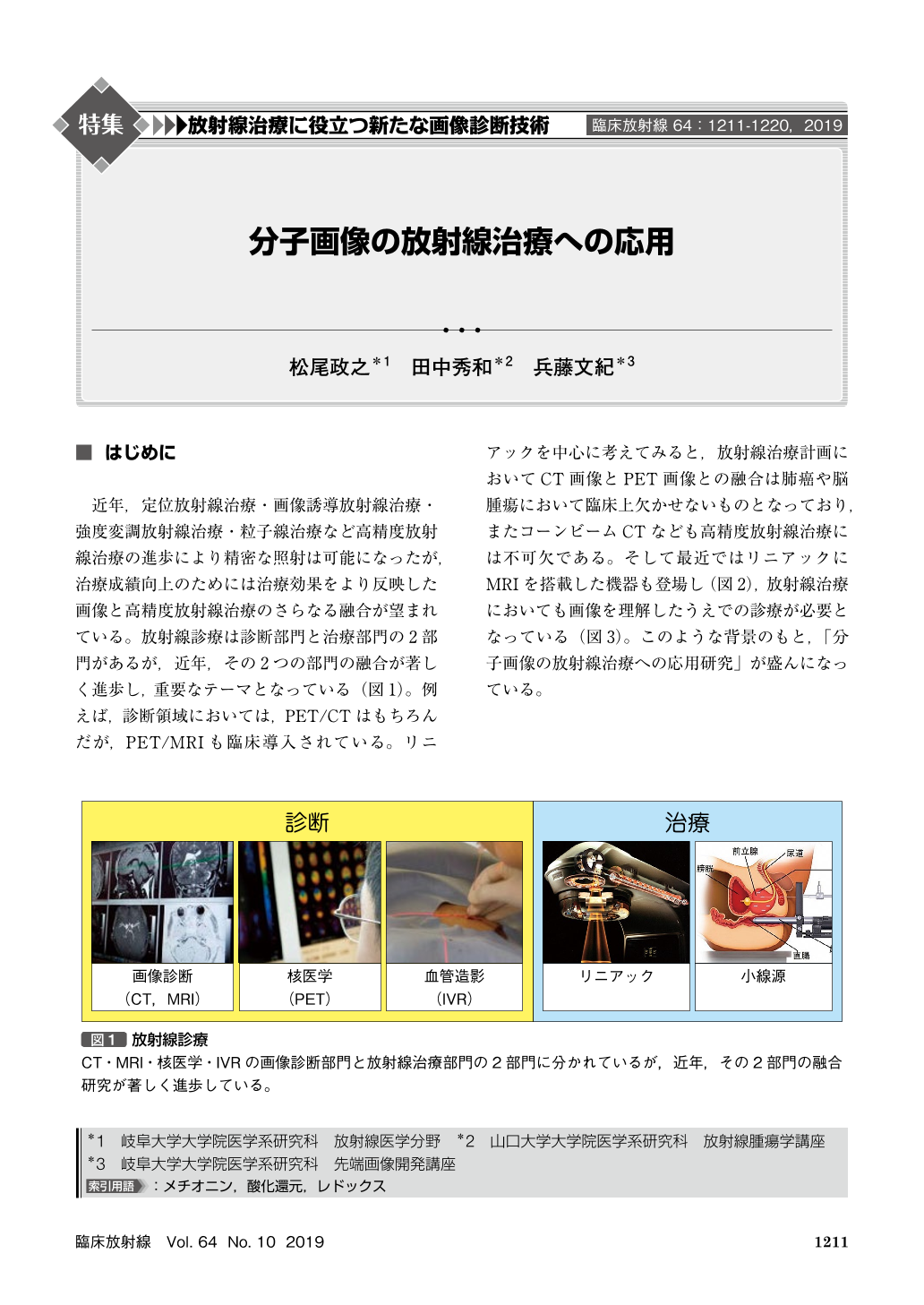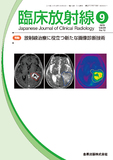Japanese
English
- 有料閲覧
- Abstract 文献概要
- 1ページ目 Look Inside
- 参考文献 Reference
近年,定位放射線治療・画像誘導放射線治療・強度変調放射線治療・粒子線治療など高精度放射線治療の進歩により精密な照射は可能になったが,治療成績向上のためには治療効果をより反映した画像と高精度放射線治療のさらなる融合が望まれている。放射線診療は診断部門と治療部門の2部門があるが,近年,その2つの部門の融合が著しく進歩し,重要なテーマとなっている(図1)。例えば,診断領域においては,PET/CTはもちろんだが,PET/MRIも臨床導入されている。リニアックを中心に考えてみると,放射線治療計画においてCT画像とPET画像との融合は肺癌や脳腫瘍において臨床上欠かせないものとなっており,またコーンビームCTなども高精度放射線治療には不可欠である。そして最近ではリニアックにMRIを搭載した機器も登場し(図2),放射線治療においても画像を理解したうえでの診療が必要となっている(図3)。このような背景のもと,「分子画像の放射線治療への応用研究」が盛んになっている。
Accurate diagnosis of tumor extent and/or staging of disease is very important in radiation therapy. This is particularly true for precious radiation therapy such as 3-D conformal RT, intensity-modulated radiation therapy(IMRT), and particle therapy which aims at a higher therapeutic ratio between local control and normal tissue sparing. And, also there is now the need to evaluate these potential new biomarkers such as PET for tumor response. We evaluate the multi-modality imaging in the radiation treatment for precious radiation therapy, and also suggest that the multi-modality imaging may not only outline more precisely the true extent of viable tumor tissue than CT/MRI, but also predict biological processes.

Copyright © 2019, KANEHARA SHUPPAN Co.LTD. All rights reserved.


